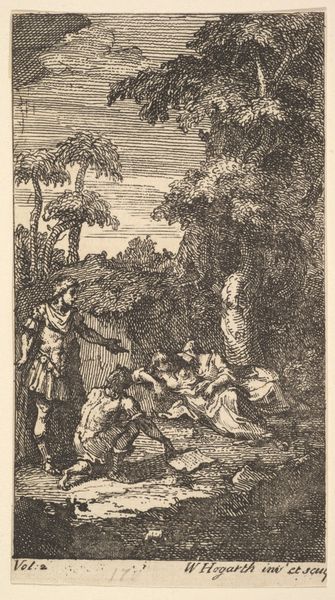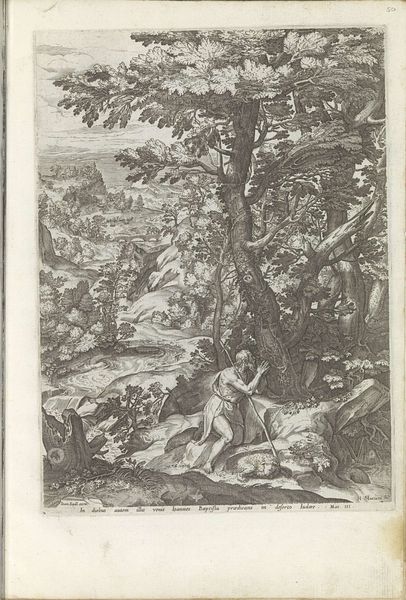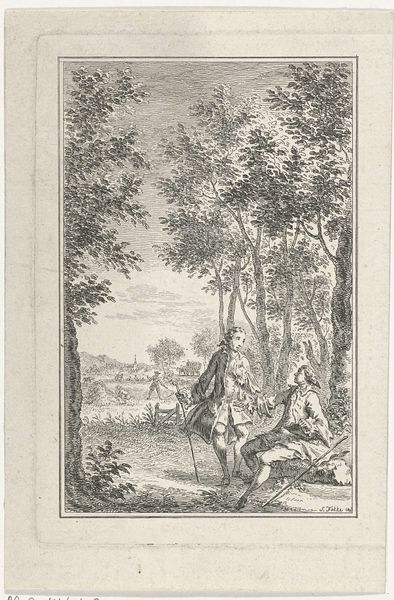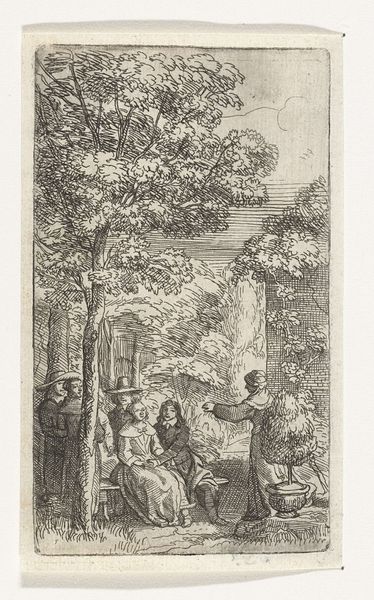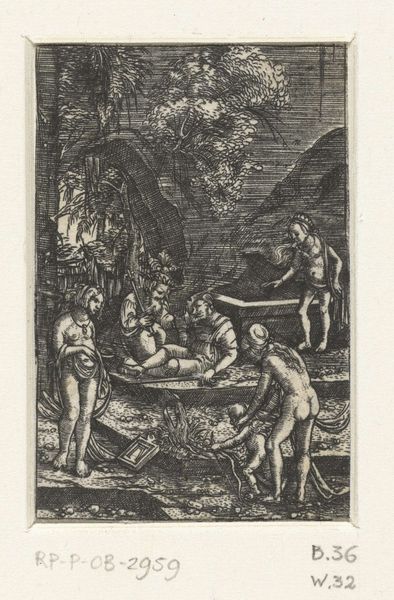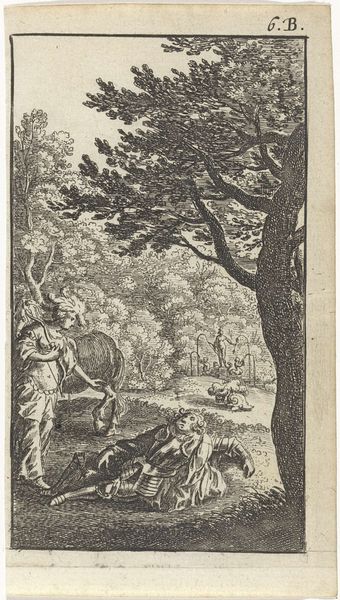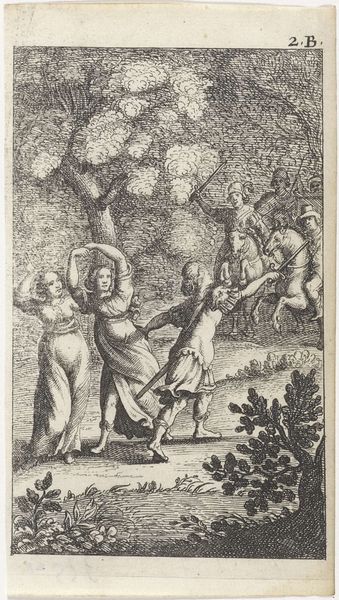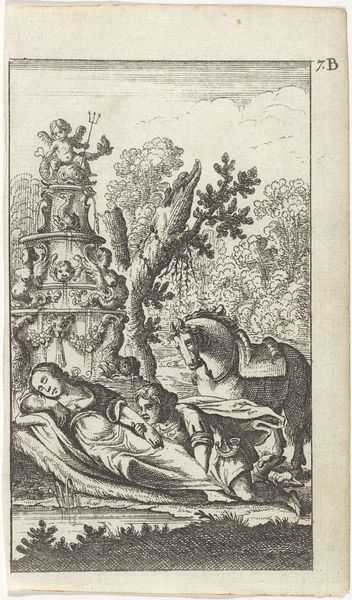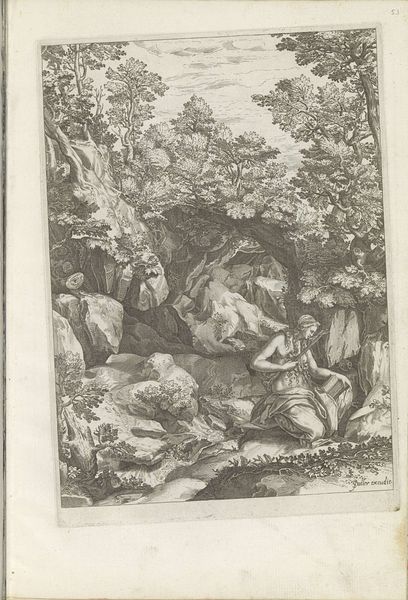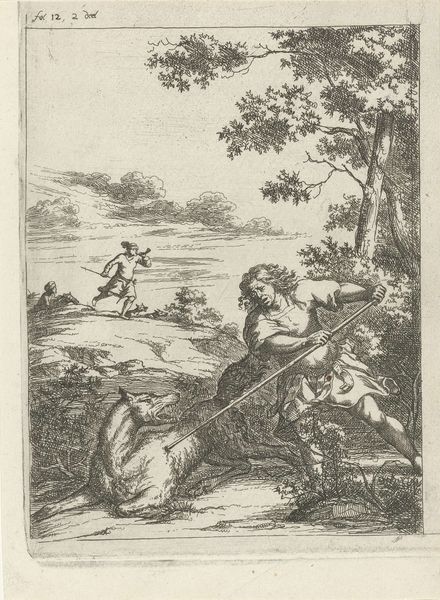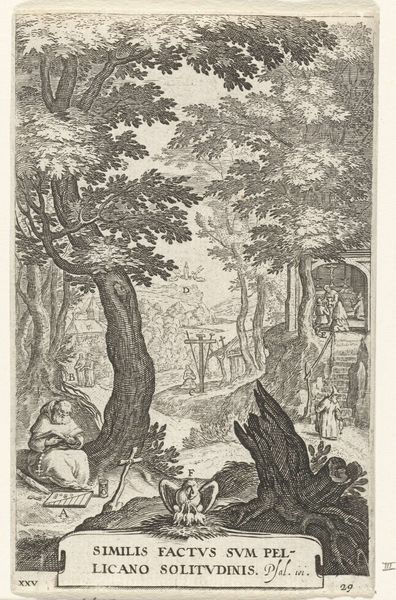
print, engraving
#
narrative-art
#
baroque
# print
#
figuration
#
genre-painting
#
engraving
Dimensions: height 130 mm, width 75 mm
Copyright: Rijks Museum: Open Domain
Curator: I find this rather haunting, almost dreamlike. A tangle of trees frames a disquieting scene, wouldn't you agree? Editor: Yes, absolutely. This is "Soldier Assaulting a Woman," created in 1667 by Abraham Dircksz. Santvoort. It's an engraving, a print now held in the Rijksmuseum. Curator: An assault indeed, violently captured in lines. See how the "soldier," masked and wielding a stick, looms over the woman on the ground? But other women are in the frame, seemingly listless as they do nothing. What visual narrative do you see there? Editor: It feels timeless, sadly. The soldier’s mask dehumanizes him, transforming him into a kind of allegorical figure of aggression, yet he's of his time, as his attire suggests some 17th century conflict I cannot name. The composition, however, disrupts easy interpretation; its like something both hidden and plainly, horribly displayed. I wonder if those seemingly "listless" women aren’t stunned into inaction – paralysis rooted in collective trauma. Curator: Precisely! Perhaps Santvoort speaks to our deep cultural memory of such events, repeating in history, each invasion with the same roles enacted again. Consider how genre painting and narrative traditions allowed artists to encode complex socio-political statements into their work, seemingly, deceptively about everyday life. This could represent something far beyond just one event. Editor: I can’t help but see the figures frozen, stuck between the tangible world and something else, with their bodies rendered with stark vulnerability amidst this chaotic world around them. The print as medium amplifies the fragility even further, making me aware how quickly it might fade or tear – just like a memory, or a person. It all feels so…precarious. Curator: Indeed. It reminds us that even within beauty – baroque as this is – lurking terror can persist. And that artistic expression serves not only as decoration but as witness. Editor: Well said. I think it makes us think twice before we fall back into seeing the art from this era simply as charming and lovely; the artist knew very well what he was up to, by planting the seed of doubt within it all.
Comments
No comments
Be the first to comment and join the conversation on the ultimate creative platform.

